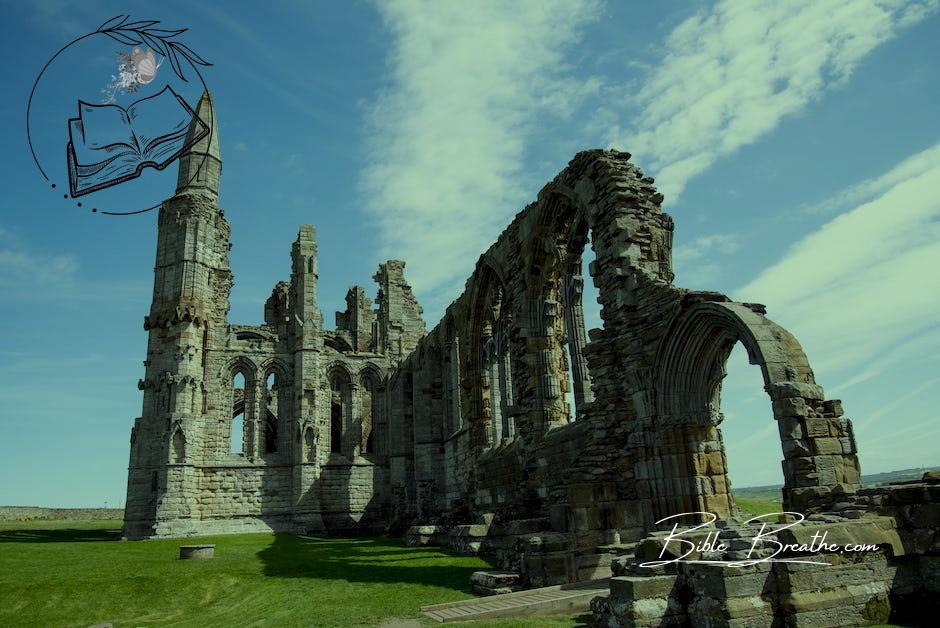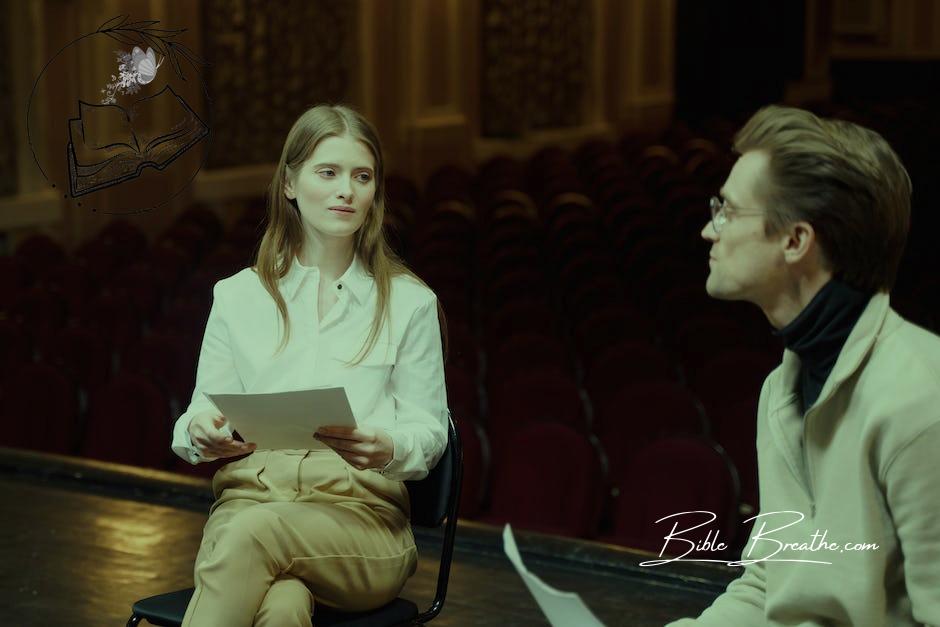Who’s Ramah in the Bible, fam?
Ramah ain’t just one spot; it’s like multiple “Ramahs” across the biblical map, each with its own flavor.
Picture it as God’s Netflix series, starring Prophet Samuel, Deborah the Judge, King David, King Saul, King Baasha, and King Asa.
From the Ephraim hills to the territories of Asher, Naphtali, Benjamin, and Simeon, these cities were biblical blockbusters!
They even got a cameo in the New Testament in Matthew’s gospel, but let’s not forget the heart-wrenching moments like Rachel’s burial.
Ramah ain’t just a place; it’s a spiritual rollercoaster.
So, let’s hop on and explore these biblical adventures.
Strap in, fam, as we uncover the hidden gems and twists in these biblical “Ramah” stories that still speak to us today.
🌟
Key Takeaways
- Ramah holds multifaceted significance in biblical history. It was a prominent town in ancient Israel with connections to various key events and figures.
- Ramah is associated with several notable biblical figures, including the prophetess Deborah, who is said to have resided there. Additionally, it was the hometown of the prophet Samuel, one of the most revered figures in the Old Testament, who anointed both Saul and David as kings of Israel.
- Ramah’s prophetic importance is evident in the Old Testament, as it served as a center for prophecy and worship. Samuel established a school of prophets in Ramah, and it became a place of spiritual significance.
- In the New Testament, Ramah is not mentioned directly, but it is part of the broader historical and geographical context of the Holy Land, where many significant events in the life of Jesus and the early Christian church took place.
- Understanding the role of Ramah in the Bible provides insight into the historical and spiritual tapestry of ancient Israel. It underscores the importance of specific locations in biblical narratives and their impact on the unfolding of God’s plan in both the Old and New Testaments.
Uncovering Ramah’s Secrets in the Bible

Photo modified by BibleBreathe.com. Original photo by Denniz Futalan on Pexels
Ever pondered about Ramah and its role in the Bible?
Hang tight as we take a road trip through several cities with the name Ramah that played intriguing parts in biblical history.
Ramah of Asher: A Hidden Gem
Ever heard of Ramah of Asher?
It’s like that hidden gem in a vast land.
Nestled in the heart of Asher’s territory, this city held its own significance.
It was the place where the tribe of Asher settled and prospered, a symbol of their ancestral heritage.
Just like finding a hidden treasure, this Ramah teaches us that even places that seem small can have a tale worth sharing.
The hidden things belong to the Lord our God, but the revealed things belong to us and our children forever.” – Deuteronomy 29:29 (KJV)
Ramah of Naphtali: Boundaries and Blessings
Heading east, we reach Ramah of Naphtali.
This city stood at the crossroads, marking the boundaries between the territories of Asher and Naphtali.
Like a bridge connecting two worlds, it played a crucial role in the tribal landscape.
It’s a reminder that in life, we often find ourselves at the crossroads, much like Ramah of Naphtali.
Ramah of Benjamin: A Place of Prominence
Shifting gears to Ramah of Benjamin!
This city gained prominence through its association with the great Judge Deborah and King David.
It’s like standing in the shadows of historical giants.
The city set the stage for pivotal events, reminding us that even small places can become platforms for significant moments in history.
“The Lord is my strength and my shield; my heart trusted in him, and I am helped.” – Psalm 28:7 (KJV)
Ramah of Simeon: Amidst the Wilderness
Our last stop, Ramah of Simeon, located in the arid landscapes of the Negev.
Here, King David had a connection, showing that God’s presence can be found even in the most challenging of environments.
Just as King David found strength in the wilderness, we too can draw inspiration from our own challenges in life.
As we unravel the tapestry of these different cities named Ramah, we discover that each has its unique story to tell, much like the chapters of our own lives.
For I know the plans I have for you, declares the Lord, plans for welfare and not for evil, to give you a future and a hope.” – Jeremiah 29:11 (KJV)
The Mystery of Ramah: Unveiling a Biblical Enigma

Photo modified by BibleBreathe.com. Original photo by Pixabay on Pexels
Ever heard of Ramah in the biblical tale?
It’s like an enigma wrapped in a riddle, a mystery waiting to be unraveled in the vast tapestry of the scriptures.
Ramah: A Glimpse into the Past
To dig into the story of Ramah, let’s first set the scene.
Ramah was a place, a significant location in biblical times.
Think of it like a crossroads where stories converged and destinies were shaped.
“In Ramah was there a cry heard, Rachel weeping for her children because they were not.” – Jeremiah 31:15 (KJV)
Here, the prophet Jeremiah paints a poignant picture, evoking the lamentation of Rachel for her lost children.
Ramah became a symbol of sorrow and loss, a place etched into the annals of history.
A Tale of Tears and Hope
The reference to Ramah in the Bible often brings forth stories of tears and tribulations.
It’s a place where emotions ran deep and where hope struggled to rise amidst adversity.
Imagine a town where weeping echoes through the hills, where grief and loss carve lines into the faces of its inhabitants.
Yet, even in the midst of this sorrow, there was a glimmer of hope, a promise of restoration and redemption.
“Thus saith the LORD; A voice was heard in Ramah, lamentation, and bitter weeping; Rahel weeping for her children refused to be comforted for her children, because they were not.” – Jeremiah 31:15 (KJV)
Ramah: Symbolism and Redemption
Ramah, in its symbolic essence, became a representation of humanity’s struggles and the longing for solace.
It’s a reminder that even in our darkest moments, there’s a flicker of hope, a promise of comfort amidst the tears.
In the tapestry of biblical narratives, Ramah stands as a beacon, reminding us that in our times of weeping, we can find solace, and through our trials, we can discover redemption.
It’s a part of the grand design, a thread in the intricate fabric of faith.
*As we explore the depths of biblical tales, Ramah emerges as a symbol of human emotion and the enduring hope that springs from the heart of adversity.
Just like in Ramah’s story, in the midst of our tears, God whispers promises of restoration and healing, unveiling a future beyond our pain.*
Ramah of Benjamin: A Hub of Biblical Tales

Photo modified by BibleBreathe.com. Original photo by cottonbro studio on Pexels
Let’s dig deeper into the biblical story and uncover the wonders of Ramah of Benjamin—a place teeming with tales of faith, power, and intrigue.
The Location and its Weight
Nestled in the hill country of Ephraim, Ramah of Benjamin stood tall, a beacon guiding the path like a lighthouse in the dark.
It wasn’t just a location; it was a stage for destiny.
“A city that is set on a hill cannot be hidden.” – Matthew 5:14 (KJV)
Deborah’s Legacy: Israel’s Resilient Judge
The tale of Ramah begins with Deborah, an exceptional female judge of Israel.
These very hills were her home, and her wisdom shone brilliantly in the darkest times.
In a world where societal norms dictated roles, Deborah shattered those barriers, showing that true leadership transcends gender.
Saul and David: A Tale of Two Kings
Ramah also bore witness to the intricate relationship between King Saul and the future king, David.
Amidst these hills, the shepherd boy David played his comforting tunes, bringing solace to Saul’s troubled heart.
Ramah mirrored life’s harmony and discord.
“How are the mighty fallen in the midst of the battle!” – 2 Samuel 1:25 (KJV)
Divided Monarchy: Baasha’s Stronghold and Asa’s Wisdom
As time flowed, the kingdom fractured, and Ramah became a focal point of political intrigue.
King Baasha fortified the city, setting the stage for conflicts.
King Asa of Judah responded with strategic wisdom, revealing that in times of adversity, prudent choices can pave the way to peace.
Blessed are the peacemakers, for they shall be called sons of God.” – Matthew 5:9 (KJV)
So, when you mull over who Ramah is in the Bible, remember, it’s more than a mere name on a map; it’s a treasure trove of tales reflecting the human experience—faith, courage, power, and diplomacy interwoven into the very fabric of life.
The Tale of Ramah: Unveiling Biblical Mysteries

Photo modified by BibleBreathe.com. Original photo by Mikhail Nilov on Pexels
Ever wondered about Ramah in the grand story of the Bible?
It’s like a hidden treasure, a thread intricately woven into the rich tapestry of our sacred texts.
Ramah: Where History and Prophecy Meet
Ramah isn’t just a dot on the ancient map; it’s a stage where prophecies were declared and history was made.
Picture it like a theater, with prophets uttering their lines and events playing out on its spiritual stage.
“Ever heard the thunderous voice in the heavens? It’s like God’s way of saying, ‘I’m here.’ His path is in the sea, in the great waters, and we may not always understand His steps, but they’re there.” – Isaiah 77:18 (KJV)
Isaiah, the visionary prophet, glimpsed into the future and saw Ramah facing the storm of Assyrian invasion.
It was a turbulent time, and Ramah was right in the eye of the storm.
Ramah: A Symbol of Consequences
Hosea, another prophet with a powerful voice, warned Israel of the repercussions of their actions.
Ramah symbolized those consequences, a city reflecting the outcome of straying from righteousness.
“Plant seeds of righteousness and mercy will rain upon you. It’s time to seek the Lord, for He brings the showers of righteousness.” – Hosea 10:12 (KJV)
Hosea’s words urge us to reflect on our choices, just as Israel faced the harvest of their deeds.
Ramah: Jeremiah’s Trial and Triumph
Jeremiah, a prophet with a story of endurance, faced imprisonment in Ramah.
But even in captivity, he stood strong in his divine calling.
“Before you even took your first breath, God knew you. He set you apart, destined you to be a prophet to the nations.” – Jeremiah 1:5 (KJV)
Jeremiah’s journey shows us that even in the darkest moments, faith can light the way.
Ramah: Hope’s Waypoint
Ramah became a pivotal point for the Hebrew captives returning from Babylonian exile.
It’s like a rest stop on a long journey, a place where God’s promises met the reality of their return.
“God knows His plans for you, plans of peace and hope for a bright future.” – Jeremiah 29:11 (KJV)
In this return, Ramah represented the fulfillment of God’s promises.
In the grand narrative of the Bible, Ramah is a place where the threads of history, prophecy, trials, and triumphs are intricately woven.
It’s a reminder that every place mentioned in the Bible has a story, and Ramah’s tale is one of faith’s endurance, judgment’s consequence, and hope’s realization.
*Ramah, a city woven into the fabric of biblical narratives, is a window into history and prophecy.
As we unlock its significance, we discover a deeper understanding of the interplay between God’s plan and humanity’s journey.*
Rachel’s Resting Place: The Heartbeat of Ramah

Photo modified by BibleBreathe.com. Original photo by Darrel Und on Pexels
In this beautiful biblical tapestry, even a resting place holds threads of a profound narrative.
That’s the magic we find with Rachel’s resting place, intricately linked to Ramah.
Rachel’s Burial Site: A Place of Cherished Memories
Ramah’s significance stretches beyond mere geography—it cradles the resting place of Rachel, a cherished figure in biblical history.
Much like a timeless memorial, her burial site whispers to us the enduring power of love and devotion.
Love is strong as death; jealousy is fierce as the grave.” – Song of Solomon 8:6 (KJV)
Jeremiah’s Tears: Rachel Weeping for Her Beloved Children
The prophet Jeremiah penned poignant words, capturing Rachel’s tears as she wept for her children.
Ramah, where this lament unfolded, serves as a symbol of both sorrow and hope.
It’s a reminder that even in the darkest of moments, there’s the promise of a brighter tomorrow.
“A voice was heard in Ramah, lamentation, and bitter weeping; Rachel weeping for her children refused to be comforted for her children, because they were not.” – Jeremiah 31:15 (KJV)
Matthew’s Revelation: Bridging the Old and New Testaments
In the New Testament, the Gospel of Matthew draws from Jeremiah’s words, connecting them to the massacre of the innocents ordered by King Herod in Bethlehem.
This intertwining of Ramah, Rachel, and the birth of Christ highlights the seamless threads uniting the Old and New Testaments.
Out of Egypt have I called my son.” – Matthew 2:15 (KJV)
So, when you inquire about Ramah in the Bible, it’s not just about a place marked on a map.
It’s about the profound stories and emotions it embodies—the love of a mother, the lament of a prophet, and the hope of a Savior.
Ramah, like the Bible itself, is a tapestry of timeless truths and enduring faith, revealing the heartbeat of our shared spiritual journey.
Frequently Asked Questions (FAQs) About Who Is Ramah In The Bible
What is the significance of Ramah in the Bible?
Ramah holds biblical significance as a place mentioned several times in the Old Testament.
One notable instance is in Jeremiah 31:15, referring to Rachel weeping for her children.
Ramah is associated with moments of sorrow and hope, illustrating the ups and downs of the human journey.
How many cities named Ramah are mentioned in the Bible?
There are multiple cities named Ramah in the Bible.
Notable ones are in the regions of Ephraim and Benjamin.
These locations appear in various historical and prophetic contexts.
Why is Ramah of Benjamin particularly significant?
Ramah was significant as Samuel, a key biblical figure, was from Ramah.
Additionally, it was a place of political and historical importance, serving as a center for various events in the lives of Saul and David.
Its significance also extends to biblical prophecies, including Jeremiah’s account of Rachel weeping for her children in Ramah (Jeremiah 31:15).
How is Rachel connected to Ramah?
Rachel, the wife of Jacob, is connected to Ramah as her burial place.
Ramah, in the territory of Benjamin, became known as the site of Rachel’s tomb.
This connection is mentioned in the Bible, emphasizing the historical and familial significance.
{
“@context”: “https://schema.org”,
“@type”: “FAQPage”,
“mainEntity”: [
{
“@type”: “Question”,
“name”: “What is the significance of Ramah in the Bible?”,
“acceptedAnswer”: {
“@type”: “Answer”,
“text”: “Ramah holds biblical significance as a place mentioned several times in the Old Testament. One notable instance is in Jeremiah 31:15, referring to Rachel weeping for her children. Ramah is associated with moments of sorrow and hope, illustrating the ups and downs of the human journey.”
}
},
{
“@type”: “Question”,
“name”: “How many cities named Ramah are mentioned in the Bible?”,
“acceptedAnswer”: {
“@type”: “Answer”,
“text”: “There are multiple cities named Ramah in the Bible. Notable ones are in the regions of Ephraim and Benjamin. These locations appear in various historical and prophetic contexts.”
}
},
{
“@type”: “Question”,
“name”: “Why is Ramah of Benjamin particularly significant?”,
“acceptedAnswer”: {
“@type”: “Answer”,
“text”: “Ramah was significant as Samuel, a key biblical figure, was from Ramah. Additionally, it was a place of political and historical importance, serving as a center for various events in the lives of Saul and David. Its significance also extends to biblical prophecies, including Jeremiah’s account of Rachel weeping for her children in Ramah (Jeremiah 31:15).”
}
},
{
“@type”: “Question”,
“name”: “How is Rachel connected to Ramah?”,
“acceptedAnswer”: {
“@type”: “Answer”,
“text”: “Rachel, the wife of Jacob, is connected to Ramah as her burial place. Ramah, in the territory of Benjamin, became known as the site of Rachel’s tomb. This connection is mentioned in the Bible, emphasizing the historical and familial significance.”
}
}
]
}
Matt Turner
I’m Matt, and I love breaking down Bible verses in a way that’s easy to understand and apply to everyday life. My goal is to help you connect with God’s Word and find practical ways to live it out. Whether you’re new to the Bible or just looking for some fresh insights, I’m here to walk with you and share what I’ve learned along the way.

